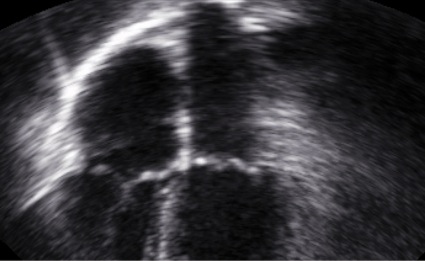Author: Naveed Saleh MD MS
Anesthesiology News
In light of rising rates of transcatheter aortic valve replacement (TAVR) and staffing constraints, cardiac anesthesiologists could be tapped to perform transthoracic echocardiography (TTE).
Researchers assessed the feasibility of intraoperative TTE performed and interpreted by anesthesiologists in assessing paravalvular (PVL) leak, in novel research presented at the 2019 annual meeting of the Society of Cardiovascular Anesthesiologists (SCA).
“Traditionally, TTE is the domain of cardiologists and echo technicians. However, many have advocated that anesthesiologists should perform TTE in the perioperative period, such as in the ‘point of care’ or ‘focused cardiac ultrasound’ type of use,” said Christopher Y. Tanaka, MD, a professor of anesthesiology at the Albert Einstein College of Medicine and an anesthesiologist in the Division of Cardiothoracic Anesthesiology at Montefiore Medical Center, in New York City.
“While TTE for TAVR guidance is an advanced skill beyond the scope of point-of-care ultrasound, we believe that it is feasible [for] cardiac anesthesiologists to be able to perform this task. Given the fact that cardiac anesthesiologists already have advanced perioperative transesophageal echocardiography [TEE] experience, and a growing number have at least some training or experience with TTE, it is reasonable to assume that with some additional training, they can perform TTE in TAVR,” he continued.
Taking on TTE
In the current retrospective study, 71 cases were identified to compare intraoperative and postoperative TTE assessments of PVL. No significant differences in baseline demographics existed. The frequency, type and degree of differences in intraoperative and postoperative TTE PVL did not vary between the anesthesiology and cardiology teams, with similar adequate imaging, rates of conversion to general anesthesia, and rates of post-TAVR implantation balloon dilation. In fact, although not statistically significant, when the intraoperative TTE was performed by the anesthesiology versus cardiology teams, there tended to be more agreement in PVL assessment with postoperative TTE. Moreover, one cardiac anesthesiologist picked up a major complication—aortic valve annular rupture—using TTE.
Dr. Tanaka also pointed out that one major advantage of having cardiac anesthesiologists perform TTE is the flexibility offered in staffing for TAVR.
“Coordinating to have a cardiologist immediately available during TAVR cases can be logistically challenging and occupies a cardiology echo lab’s resources from other duties,” he said. “An anesthesiologist is usually present in TAVR cases for anesthetic management anyhow, thus potentially making coordination easier and alleviating burdens on cardiology departments. In addition, this allows for cardiac anesthesiologists to incorporate TTE more routinely into their practice, and hopefully advance this modality within the subspecialty and in the field of anesthesiology overall.”
There are certain caveats regarding the results of the study, according to Dr. Tanaka. His main concern was that performing TTE during a TAVR case is an advanced skill that requires certain levels of training and experience.
“At our institution, we found a partnership with the cardiology echo lab was instrumental in making this process possible,” he said. “In addition, how much training is required and assessment of proficiency need to be addressed.”
Looking forward, Dr. Tanaka is optimistic about expanding the role of cardiac anesthesiologists. “We hope that more centers explore this staffing model for TTE in TAVR, and perhaps others can quantify what potential benefits this can have for institutions in terms of resource utilization.”
In a separate interview, Linda Shore-Lesserson, MD, an anesthesiologist at North Shore University Hospital, in Manhasset, N.Y., and a past president of the SCA, highlighted that cardiac anesthesiologists are already well prepared to take on this responsibility during TAVR cases.
“The surge in the application of point-of-care ultrasound in medicine has influenced practice and training requirements in many disciplines,” she said. “Clearly among anesthesiologists, cardiac anesthesiologists are uniquely qualified to perform TEE in the perioperative setting, and they achieve NBE [National Board of Echocardiography] certification to demonstrate this.”
Dr. Shore-Lesserson also highlighted the importance of the study in showing how effective cardiac anesthesiologists can be in assisting with TTE.
“Currently, an increasing trend in cardiac anesthesiology education is [to] teach the performance of transthoracic echocardiography,” she said. “This paper nicely demonstrates that properly trained and certified cardiac anesthesiologists can perform periprocedural transthoracic echocardiography with similar diagnostic accuracy to their cardiology colleagues.”



Leave a Reply
You must be logged in to post a comment.